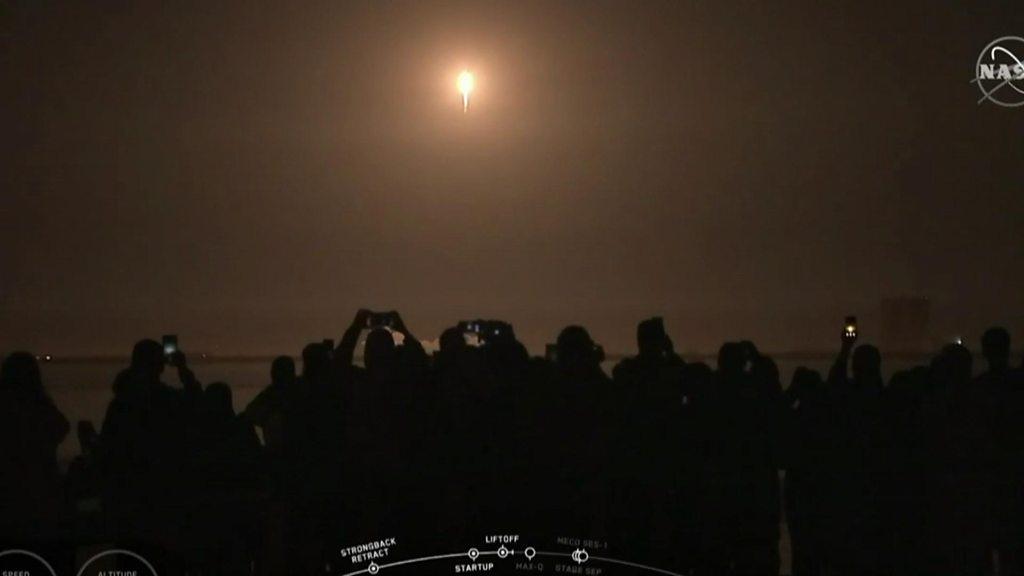SpaceX has launched its Falcon Heavy rocket for the third time
- Published
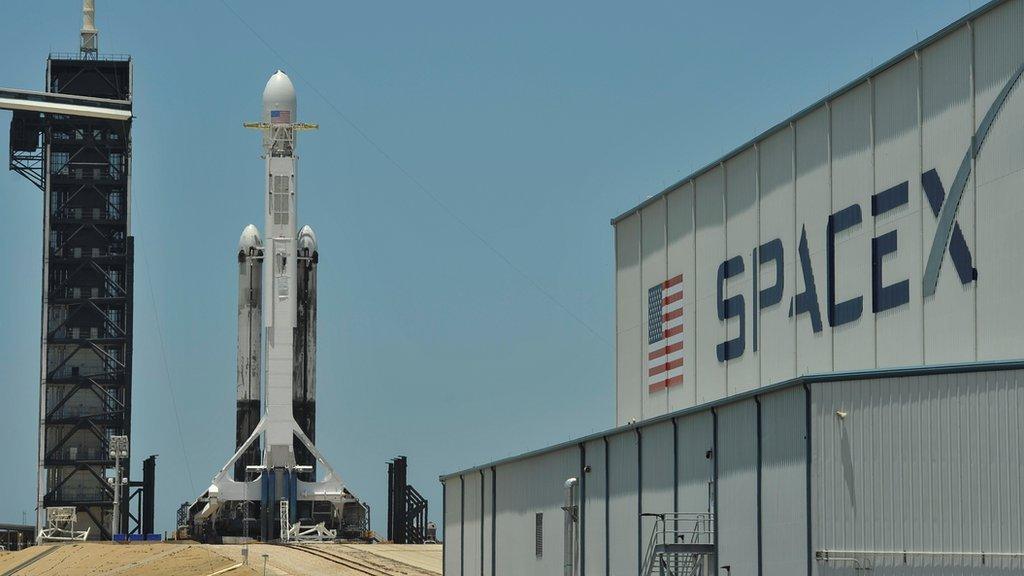
The Falcon Heavy is one of the world's most powerful rockets
SpaceX has successfully completed one of its most challenging rocket launches.
It blasted off from Cape Canaveral in Florida carrying 24 satellites into orbit as part of the U.S. Air Force's Space Test Program-2.
The 24 research satellites will do lots of different things like help improve deep-space navigation, help improve tropical weather forecasts and test out new 'greener' fuel propellants.
The satellites have been created by a variety of organisations like NASA, the National Oceanic and Atmospheric Administration, the US government's Department of Defence research labs and lots of different universities.
The launch is the third mission for the Falcon Heavy, which is one of the most powerful rockets in the world!
The Falcon Heavy is 70m high and weighs a whopping 1,420,788 kg.
The launch went fairly smoothly, with one minor issue...
The centre core booster, which was supposed to return to land on a droneship in the Atlantic, missed its mark and crashed into the ocean early in the mission.
The reason why it was such a complicated launch, is because it happens in stages. SpaceX explained: "Four separate upper-stage engine burns, three separate deployment orbits, a final propulsive passivation maneuver and a total mission duration of over six hours".
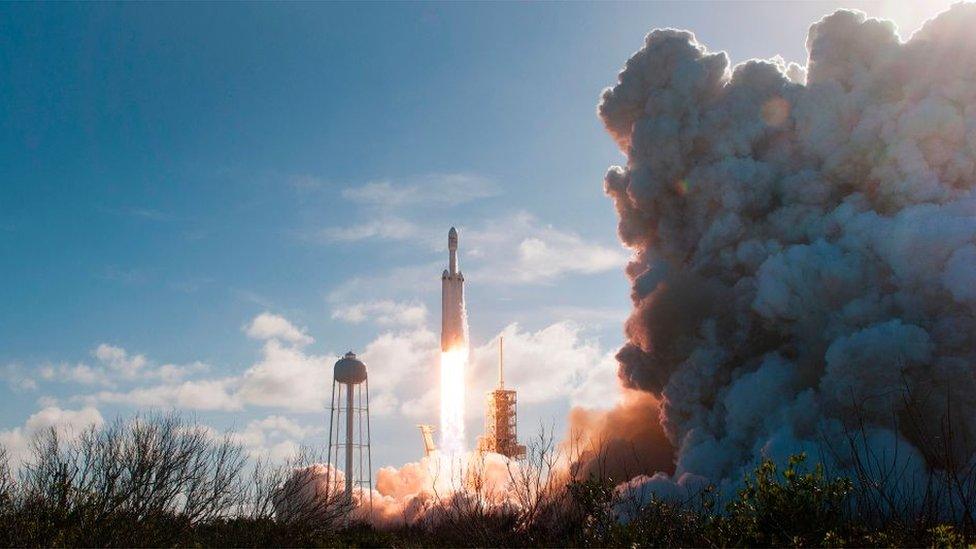
The SpaceX Falcon Heavy launched at the Kennedy Space Center in Florida, on February 6, 2018, on its first test mission.
The two side booster rockets have been used in a previous mission, and this was the first time SpaceX had reused these parts successfully on another launch.
Reusing rockets and other parts could help to bring the cost of building spacecrafts down in the future.
- Published21 February 2019
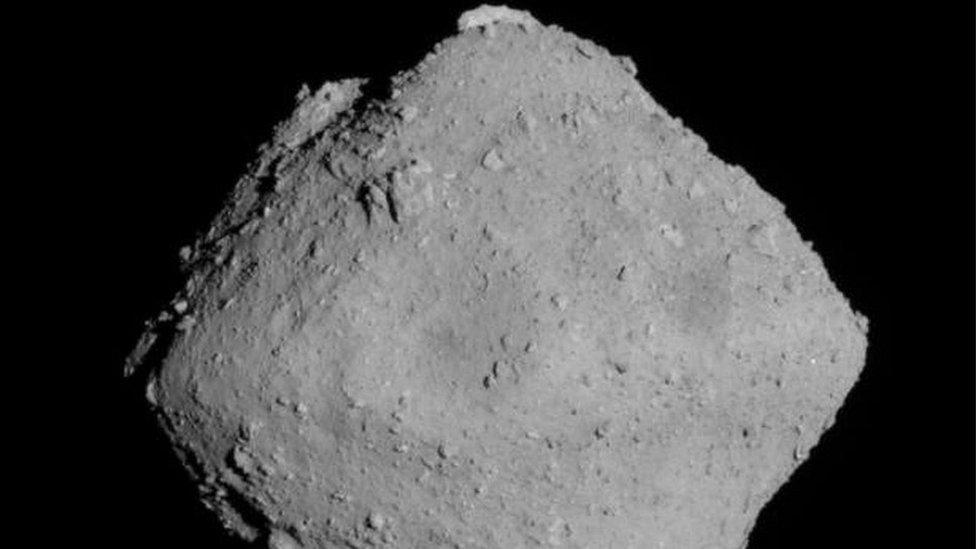
- Published11 May 2019
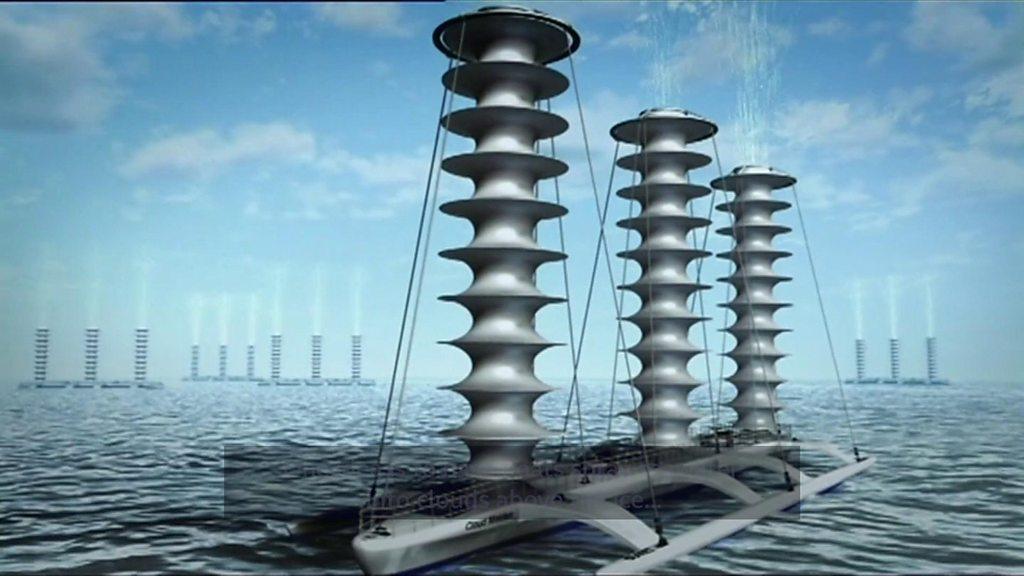
- Published2 March 2019
